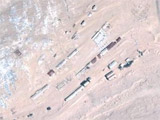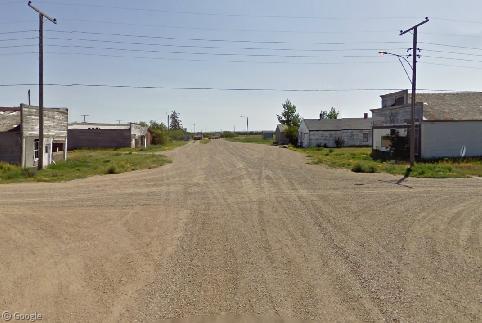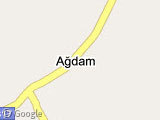Ghost Towns: Underwater Edition
Wednesday, 18th February 2009 by Alex Turnbull
This is the second in an occasional series where we’ll be travelling to some of the world’s most interesting abandoned places.
Fuelled by the ancient myth of the lost continent of Atlantis, underwater cities have always been the subject of much fascination.
Of course in real life small towns and villages are sometimes subsumed beneath changing bodies of water, but somewhat surprisingly, Google's imagery has managed to capture at least three underwater towns which were all handily above water at the time.1
St. Thomas, Nevada
Back in 1871, the small town of St. Thomas, Nevada (Wikipedia) was first abandoned by the Mormons, after a shift in the state line severely altered their tax liability.
The people who claimed the empty properties would eventually be forced to leave themselves, thanks to the construction of the Hoover Dam and the creation of Lake Mead, which even today is the largest man-made lake and reservoir in the United States.
The Hoover Dam was completed in 1935, and just three years later the last resident of St. Thomas was forced to leave by the rising waters of Lake Mead. Here we can still see the outline of the town's school, which like several other properties becomes visible when the reservoir is low.
Adaminaby, Australia
Adaminaby (Wikipedia) is a town near Australia's Snowy Mountains, New South Wales, which has the distinction of being one of the highest towns in Australia2, and a very popular place from which to take fishing trips to nearby Lake Eucumbene.
On Street View we can see The Big Trout that graces the town centre in recognition of fishing's importance here.
This is strange though, as it was the creation of Lake Eucumbene that forced all of the residents to have to abandon the original town...
In April 2007 the ongoing drought3 in this region brought the water level so low that Old Adaminaby began to re-appear, 50 years after it had been flooded as part of the Snowy Mountains Scheme hydro-electricity project.
Unfortunately the structures themselves are only faintly visible from up here, but elsewhere on the shores are other more prominent ruins that are also becoming exposed.
(Try turning on the photos option on Google Maps to see lots of great ground-level photos from the Panaramio Google Earth layer.)
Epecuén, Argentina
In contrast to these tales of towns being submerged in the name of progress, sometimes nature just takes its course. From about 1920 the water level of Argentina's lake Epecuén rose steadily, and in 1978 the locals put earth and stone defences in place to try and protect their village.
These defences held back the water until November 10th 1985, when it finally broke through and flooded the village four metres deep. Here we can see the various buildings jutting from the surface of the lake.
Judging by the number of photographs available online, it seems that Epecuén is a popular destination for photographers, so there's loads of ground-level photo sets to see - including this rather nice one on Flickr.
Thanks to Claude Warren and kjfitz.
-
With thanks to global warming. ↩︎
-
In winter it's not unusual for Adaminaby to see snowfall - but this is nothing to do with global warming. ↩︎
-
Global warming strikes again. ↩︎











Wow! Amazing.
Here’s another flooded town from Romania: View Placemark
The story is the same as most of them: flooded because of man mad dams.
Not much to see now View Placemark
but under Ladybower Reservoir in Derbyshire are the two villages of Derwent and Ashopton.
http://en.wikipedia.org/wiki/Ladybower
Pic of Derwent church reasserting itself before it was finally blown up http://www.bbc.co.uk/derby/content/images/2008/01/22/ladybower_reservoir_derwent_church_spire_203x152.jpg
cookie monster – I was going to post this!
When did they blow up the Church? I grew up in Derbyshire and was taken to see the remnants of the villages as a child during the drought of 1976, when the reservoir was low enough that they were visible. My foggy memory tells me the Church was visible, but I’m fully prepared to accept that was not actually the case!
I have heard many conflicting reports of when it was blown up – ranging from 1944 (not long after the reservoir was finished) to 1959 and as late as 1970. Parts of the village are visible but its unlikely you saw the church tower.
Per Wikipedia, the church was “dynamited on 15 December 1947, on purported safety concerns.”
http://en.wikipedia.org/wiki/Derwent,_Derbyshire
Lake Arenal in Costa Rica swallowed two villages. Supposedly you can see a church tower when the water’s low enough, but the picture isn’t very high quality. 🙁
The lava-spitting volcano right next to the lake (you’d say that’s a major safety concern for a dam…) does make up for a lot though.
View Placemark